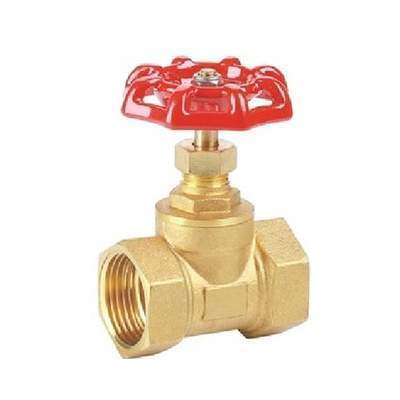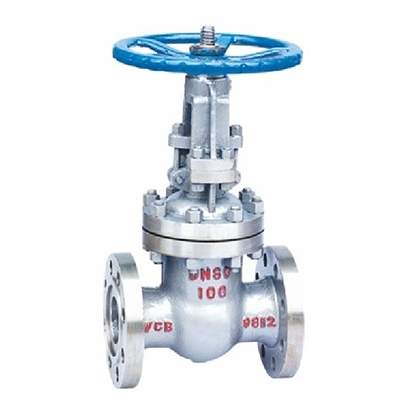Welcome to My Blog!
Before we dive into the content, if you’re interested in our products or have any questions, please feel free to visit our Contact Us page on the website. Our team is ready to assist you with inquiries, orders, or any support you may need.
Now, let’s get started on our journey together. I hope you find the content here insightful, engaging, and valuable.
Plumbing gate valves are essential components in many plumbing systems, playing a crucial role in regulating water flow and ensuring safety and efficiency in piping. Whether you’re a professional plumber or a DIY enthusiast, understanding the different types of gate valves, their applications, and how to maintain them can significantly enhance the performance of your plumbing system. In this comprehensive guide, we’ll explore everything you need to know about plumbing gate valves, from their definition to troubleshooting common issues.
What is a Plumbing Gate Valve?

Definition of a Plumbing Gate Valve
A plumbing gate valve is a type of valve used to control the flow of water or other fluids through pipes. Unlike ball valves or globe valves, gate valves operate by raising or lowering a gate-like mechanism to allow or block fluid flow. These valves are ideal for applications where the flow needs to be fully turned on or off.
How Does a Plumbing Gate Valve Work?
The mechanism inside a gate valve consists of a gate or wedge that moves vertically when the valve is turned. As the gate is raised, fluid can flow through the valve, while lowering the gate blocks the flow completely. This simple yet effective design ensures that the valve provides minimal resistance when fully open, which is crucial for maintaining proper pressure in the system.
Types of Plumbing Gate Valves
Different Types of Gate Valves
There are several types of plumbing gate valves, each designed for specific applications:
- Wedge Gate Valve: The most common type, used in various industries. The wedge-shaped gate is pushed into a seat to form a tight seal.
- Parallel Gate Valve: This valve has a parallel gate that ensures a tighter seal, often used in low-pressure applications.
- Slab Gate Valve: Typically used in larger pipelines, this valve has a flat gate that is easy to install and remove.
- Knife Gate Valve: Best for handling slurries and solids, this valve uses a sharp blade to cut through debris in the flow.
Which Type of Gate Valve is Right for Your Plumbing System?
When selecting the right type of gate valve, consider factors such as the pressure requirements, fluid type, and the size of the pipe. Wedge gate valves are generally the most versatile, while knife gate valves are ideal for industrial systems dealing with thick fluids.
Common Materials Used in Plumbing Gate Valves

Brass vs. Stainless Steel vs. Cast Iron
- Brass: Corrosion-resistant and commonly used in residential plumbing systems.
- Stainless Steel: Offers higher durability and resistance to extreme conditions, making it suitable for industrial applications.
- Cast Iron: Known for its strength and durability, often used in larger-scale systems like municipal water lines.
Choosing the Right Material Based on Your Plumbing Needs
The material of the valve should align with your system’s needs. For home plumbing, brass or stainless steel is usually sufficient, while larger commercial systems may require cast iron or other heavy-duty materials for longevity.
Benefits of Using a Plumbing Gate Valve
Advantages Over Other Valves (e.g., Ball Valves, Globe Valves)
- Gate Valves vs. Ball Valves: Ball valves are great for quick shut-offs, but gate valves are better for applications requiring full flow when open.
- Gate Valves vs. Globe Valves: Globe valves are good for throttling flow, but gate valves are more efficient for full on/off control with minimal resistance.
Why Choose a Gate Valve for Your Plumbing System?
Gate valves are particularly advantageous for their ability to handle high pressure with minimal friction. They are also durable, easy to maintain, and effective in large-scale systems where flow control needs to be either fully on or off.
How to Choose the Right Plumbing Gate Valve
Key Factors to Consider When Selecting a Gate Valve
- Size: Choose a valve that fits the pipe size and ensures an optimal flow rate.
- Pressure Rating: Ensure the valve can withstand the pressure of your system.
- Material: Select based on the fluid type and environment (e.g., corrosion resistance for water or chemicals).
- Application: Whether residential, commercial, or industrial, make sure the valve suits the specific system requirements.
How to Measure the Correct Size for a Gate Valve
To properly size a gate valve, measure the diameter of the pipe it will be connected to. Most valves will have a size rating (e.g., 1″, 2″, 4″) that matches your pipe size.
How to Install a Plumbing Gate Valve
Step-by-Step Guide for Installing a Gate Valve
- Turn off the water supply to avoid any leaks or flooding.
- Cut the pipe to the required length, ensuring it fits the valve size.
- Install the valve: Ensure the gate valve is oriented correctly in the pipe system (typically, the handle should be vertical).
- Tighten connections: Use pipe sealant or Teflon tape to ensure a leak-proof seal.
- Test the valve: Turn it on and off several times to ensure smooth operation.
DIY vs. Professional Installation
While DIY installation is possible for experienced plumbers or handy homeowners, professional installation ensures that the valve is correctly sized, installed, and sealed, preventing future problems such as leaks or faulty operation.
Troubleshooting Common Plumbing Gate Valve Issues
How to Fix a Leaking Plumbing Gate Valve
Leaks typically occur around the valve seat or the stem. To fix a leak:
- Turn off the water supply and drain the system.
- Inspect the valve for visible damage or wear.
- Tighten the valve stem packing or replace the valve seat if necessary.
What to Do When Your Gate Valve Gets Stuck
A stuck valve can often be resolved by:
- Gently tapping the valve with a hammer to free the mechanism.
- Using a valve lubricant to ease the motion.
How to Handle a Broken or Faulty Gate Valve
If the valve cannot be repaired, it will need to be replaced. Ensure that you use the correct type and size of valve for your system.
Maintenance Tips for Long-Lasting Plumbing Gate Valves

Routine Maintenance Tasks for Gate Valves
- Inspect the valve regularly for corrosion, wear, or leaks.
- Exercise the valve periodically to prevent it from becoming stuck.
- Lubricate the valve stem to ensure smooth operation.
How to Prevent Common Issues with Gate Valves
- Install filters or strainers to prevent debris from entering the valve.
- Check the valve seat regularly for wear, which can prevent proper sealing.
- Ensure that the valve is fully open or closed during use to avoid excessive pressure.
Conclusion
Gate valves are a reliable and durable solution for controlling the flow of water and other fluids. By understanding their different types, applications, and how to maintain them, you can ensure your plumbing system operates efficiently for years to come. Whether you’re installing a new system or troubleshooting an existing one, knowing when and how to use a plumbing gate valve will make all the difference.
FAQ
What is a plumbing gate valve?
A plumbing gate valve is a valve used to control the flow of water or other fluids in plumbing systems. It works by raising or lowering a gate to either allow or block the flow. Gate valves are typically used for on/off control rather than regulating flow.
How does a plumbing gate valve function?
A plumbing gate valve operates by lifting or lowering a wedge-shaped gate inside the valve. When the valve is open, the gate is lifted, allowing fluid to flow through. When it’s closed, the gate blocks the flow entirely, providing a tight seal.
When should I use a plumbing gate valve?
Gate valves are ideal for applications where you need to completely turn off or fully open the flow of water or fluids, such as in residential or industrial plumbing systems, irrigation, and water treatment plants.
What materials are commonly used for plumbing gate valves?
Plumbing gate valves are typically made from brass, stainless steel, or cast iron. The material choice depends on the application, with brass and stainless steel being popular for residential systems, and cast iron used for larger, industrial applications due to its durability.
How do I maintain my plumbing gate valve?
To maintain a plumbing gate valve, ensure it’s regularly exercised to prevent the gate from becoming stuck. Inspect for leaks, clean the valve periodically, and lubricate the stem to ensure smooth operation. Always check the valve seat for wear or corrosion.
Need help with choosing, installing, or maintaining your plumbing gate valve? Our team of experts is here to provide you with personalized advice and top-quality products. Whether you’re a DIY enthusiast or a professional plumber, we offer everything you need to keep your plumbing system running smoothly.
Contact us today for expert recommendations, or explore our wide range of plumbing gate valves for your next project!
